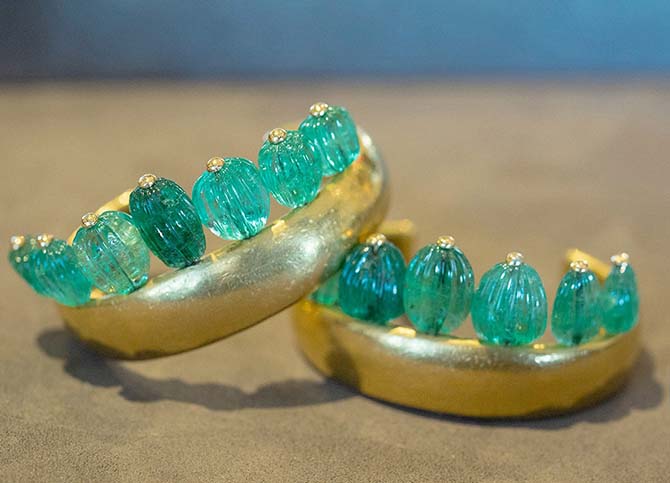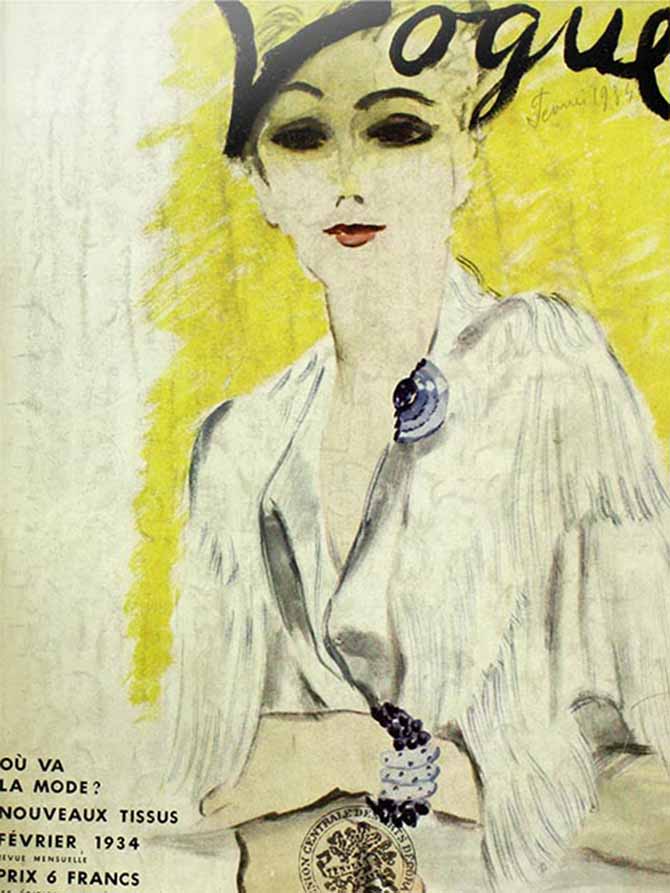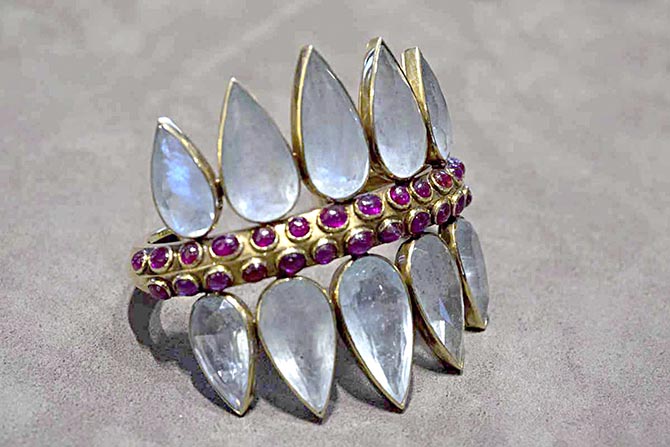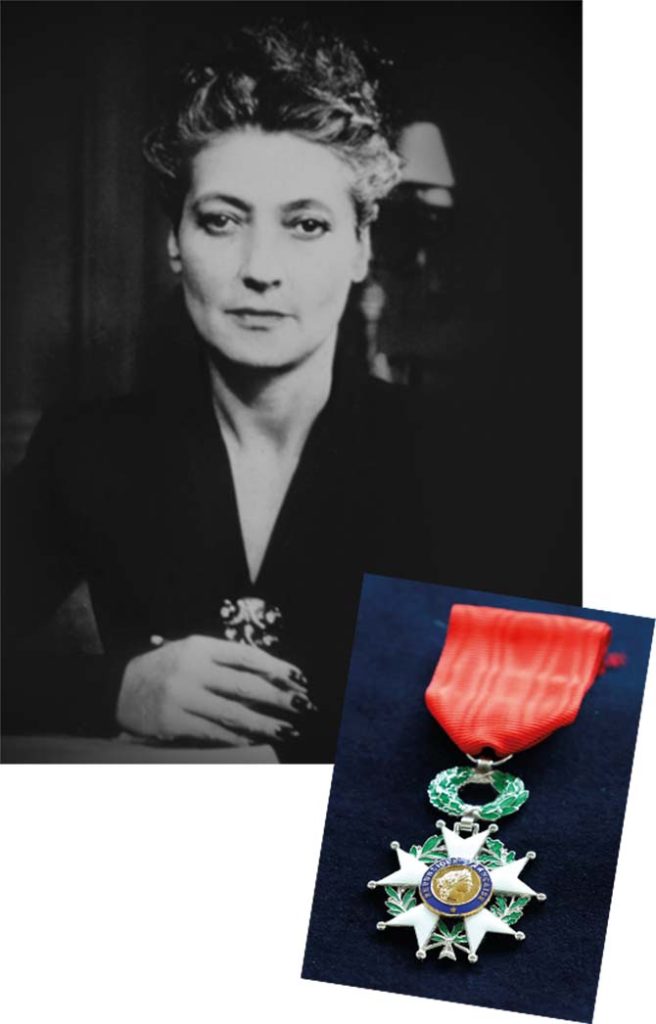Suzanne Belperron is widely regarded as one of the greatest jewelry designers of the 20th century, but little is known about her personal life outside of her work. In her latest historical novel, The Jeweler of Stolen Dreams, M.J. Rose weaves together her own interpretation of Belperron’s life, drawing from over 10 years of research and interviews with Belperron’s great niece, Michele Belperron.
In a conversation with M.J., we discussed her book and the research behind it. Here are some key highlights:

How did you come up with the idea for The Jeweler of Stolen Dreams?
While on a research trip in Paris in 2009, I stumbled upon two vintage gold and diamond cuff bracelets in Lydia Courteille’s jewelry shop window. These cuffs captivated me in a way that felt different, almost spiritual.
Inside the shop, I learned that Suzanne Belperron was the creator of these bracelets. Lydia described Belperron as an enigmatic and fiercely independent woman who was ahead of her time. She challenged traditional jewelry design and was involved in the resistance during World War II.
It was this encounter that sparked the idea for the book.

While most stories and books about Belperron focus on her designs, you delve deeper into her personal life, marriage, and love affair with Bernard Herz. Can you share some interesting facts you discovered?
During my research, I had the privilege of connecting with Michele Belperron, Suzanne’s great niece. She shared intimate details that had not been published before. Michele talked about her own interactions with Suzanne during the holidays and provided insights into Suzanne’s marriage and personal life.
Suzanne married Jean Belperron when she was 23 and he was 25. They both hailed from the same small town and moved to an apartment in Montmartre, Paris after their marriage. They had a circle of artist and actor friends.
Traveling was a passion for Suzanne. There are numerous photos of her exploring places as far as Egypt, even before the war. In these photos, she exudes elegance, often seen wearing a turban and exquisite necklaces, even while sailing or riding a camel.
She also had a significant love affair with Bernard Herz, which played a defining role in her life during the war.

When World War II began, Belperron’s life took a dramatic turn from being a celebrated jewelry designer with famous clients to becoming a Resistance Fighter. Can you share a few stories of her wartime activities?
Michele Belperron shared stories of how Suzanne helped Jews during the war, including hiding them in her in-laws’ apartment. Suzanne even asked her in-laws to provide hiding places for her lover, Bernard Herz, on multiple occasions.
One incredibly astonishing and hard-to-imagine story is what happened on November 2, 1942. Suzanne was working in B. Herz’s atelier when two Nazis arrived and arrested her. They demanded she bring her record books, knowing they contained information about jewelry sales to Jewish clients.
During the 20-minute drive from Chez B. Herz to Nazi headquarters, Suzanne tore pages out of her book and swallowed them. She literally consumed the evidence to protect her Jewish clients.

Tell us about the letters Bernard Herz wrote to Suzanne during the war and what ultimately happened to him.
While Bernard Herz was initially held in Drancy, an internment camp in the suburbs of Paris, he was able to exchange letters with those outside and receive supplies. Suzanne would visit him three or four times a week, providing him with necessities and letters.
Many of his letters to her survive and are devastating to read. In one letter, he acknowledges that he will soon be sent to a concentration camp. He expresses his gratitude for Suzanne and everything she has done for him.
He writes that, despite everything, he would make the same choices again, risking his safety to be with her. Their relationship meant everything to him. This letter is incredibly emotional, and it’s hard not to be moved by it.
Shortly after writing that letter, Bernard Herz was transferred to Auschwitz and tragically killed. Suzanne only learned of his death in 1945, after the war.
The theme of your novel revolves around the idea that objects can transport us back in time. Do you believe Belperron’s jewelry had a design that foreshadowed the bravery she demonstrated during the war?
Without a doubt. Suzanne showed immense bravery in her designs, embracing a courageous and unconventional form of beauty. She never wavered in pursuing her dreams, whether in the jewelry she created, the men she loved, or the risks she took during the war to protect what mattered most to her.
She often said that staying in Paris during the war meant either being part of the resistance or collaborating with the enemy. Suzanne chose to join the resistance and resisted following trends or conforming to established styles. Instead, she became a trendsetter herself. When you examine her jewelry after learning about her life, you can see her essence reflected in the intricate designs and undeniable radiance.
Related Stories:
What Inspires David Michael’s Jewelry Designs?
At Auction: Marlene Dietrich’s Van Cleef & Arpels Jewel
In Memoriam: Daniel Brush

